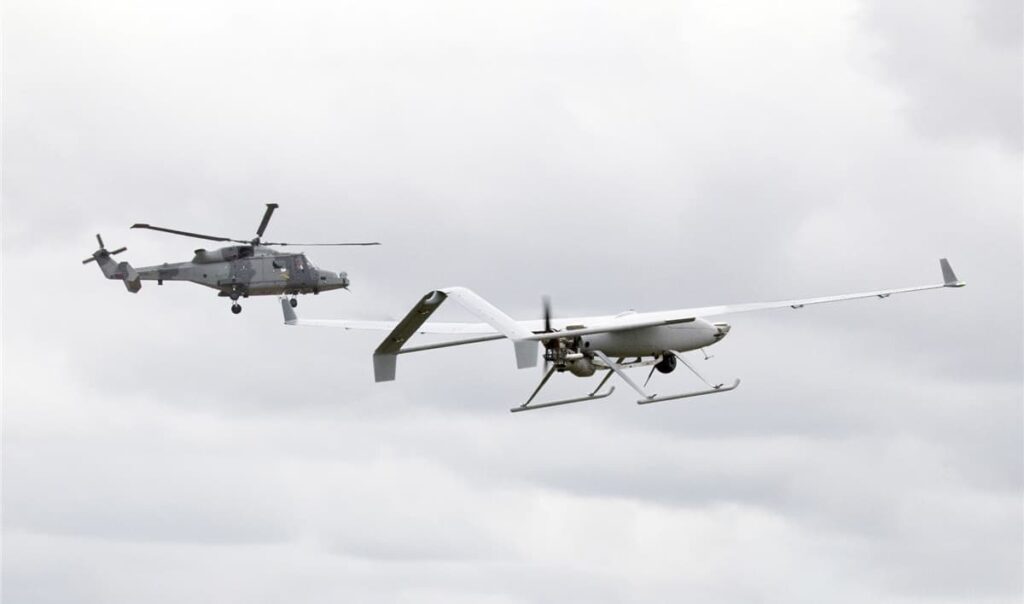
Leonardo has successfully demonstrated integrated teaming capabilities with the company’s manned AW159 Wildcat helicopter and a semi-autonomous UAV (unmanned aerial vehicle) from Callen-Lenz Associates. The demonstration was performed as part of Manned-Unmanned Teaming (MUMT) trials during the British Army’s Warfighting Experiment (AWE) 19, planned and executed by Dstl on Salisbury Plain.
MUMT combines the strengths of manned and unmanned platforms to increase the situational awareness, tempo, lethality, survivability and combat mass of armed forces, significantly reducing pilot and operator workload and allowing increased focus on the mission at hand. Teaming manned aircraft with UAVs enhances air support capability in both land and maritime domains, enabling extended and complex operations to be conducted with a mix of platforms and systems.
During this demonstration, the UAV was integrated into the Wildcat Mission System, along with a gateway interface supplied by Callen-Lenz Associates, and was controlled from the helicopter by the pilot just as if it was an onboard sensor. This marks the first time that such an integrated capability has been demonstrated in the UK on a military aircraft.
The Leonardo solution allows the Wildcat crew to control both the flight path and payload of the UAV (a capability known as Level of Interoperability (LOI) 4) using an efficient and effective task-based Human Machine Interface (HMI), rather than the more operator-intensive approaches employed on other systems.
These trials build on simulation-based development conducted under the Dstl-funded AMS DE-RISC programme. This successful demonstration is now expected to inform the MUMT capability roadmap for both the UK MoD and Leonardo.
Nick Whitney, Managing Director of Leonardo Helicopters (UK), commented: “The success of this manned-unmanned trial highlights that Leonardo and the UK MoD are investing together in the future of UK rotorcraft engineering and it demonstrates further the value of a long-term partnering approach in terms of capability development.”
Bryan Finlay, Technical Partner at Defence Science and Technology Laboratory (Dstl), said: “Leonardo and Callen-Lenz have delivered a fantastic demonstration of the integration of a UAV control station into the mission management system of the Wildcat helicopter. The clever design of the human machine interface means that cockpit workload is well managed and the demonstration has successfully de-risked that technology. This is a key step towards realising an effective operational MUMT capability.”
Maj Benjamin Thomas, Military Adviser Platform Systems Division at Dstl, stated: “The development of the Wildcat integrated MUMT solution has been impressive, culminating in the successful demonstration of the capability on AWE 19 in a series of representative military vignettes. MUMT has undoubtedly the potential to be a game-changing capability for aviation operating in the Land environment, increasing both situational awareness and survivability.”


















